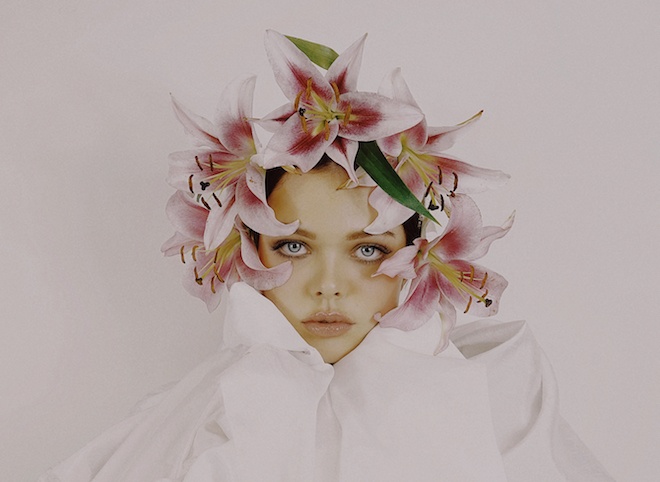What is modern Irish design? For a such a small island nation, it’s a complex answer. There mightn’t be an obvious linear evolution of what we might consider a region’s design history, in the way we can trace design movements in say, Germany, Scotland or Sweden. Instead, there exists a rich heritage of crafting and making, which, over time, has resulted in an aesthetic that is rich, roughly hewn and distinctly Irish.
This is not to say that Irish fashion designers can be described as a neat coterie. Modern Irish designers are just as likely to be influenced by the wild craggy cliff faces of the west as they are the urban grit of Limerick city; they reference folkloric narrative, as Simone Rocha did for SS’20 when she reimagined the Wren boys with their gaudy painted faces and straw suits; and they pursue the horrors that emerged from the sinister allegiance of Church and State, the tentacles of which still grip some parts of modern Ireland, as Roisin Pierce’s explored in her debut collection Mná ì bhláth (Women In Bloom).

Underpinning this storytelling is the tangible history of textile making that can be found in nearly every corner of the country. Linen from Derry, lace from Carrickmacross, tweed from wild north-west Donegal, and of course, Irish wools. These ancient traditions of weaving and spinning are both ancient and thoroughly modern, at risk of being a dying art yet vital to the industry well beyond the borders within they are created. Ahead of her SS’20 collection for Alexander McQueen, designer Sarah Burton decamped to Northern Ireland for several days to study the techniques of local textile makers.
And what of the next generation of designers? The aesthetic of the young Irish designers poised on the edge of the industry cannot be contained in a few words. It is a motely mix, a heady combination of Celtic tradition and ‘foreign’ influence; for this is no longer the homogenous Catholic nation it was half a century ago.






 Twitter
Twitter
 Tumblr
Tumblr
 YouTube
YouTube
 Facebook
Facebook
 Instagram
Instagram
